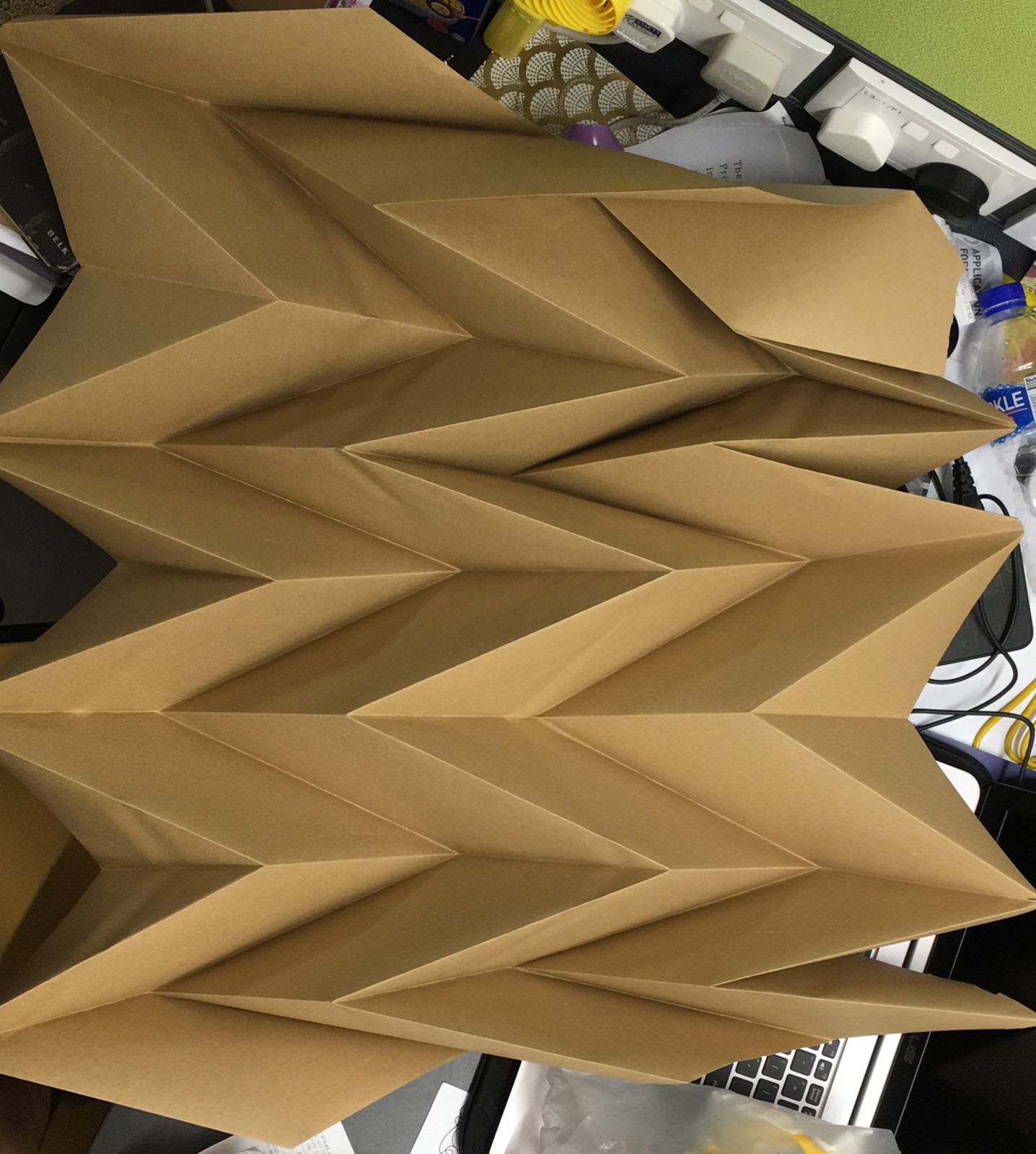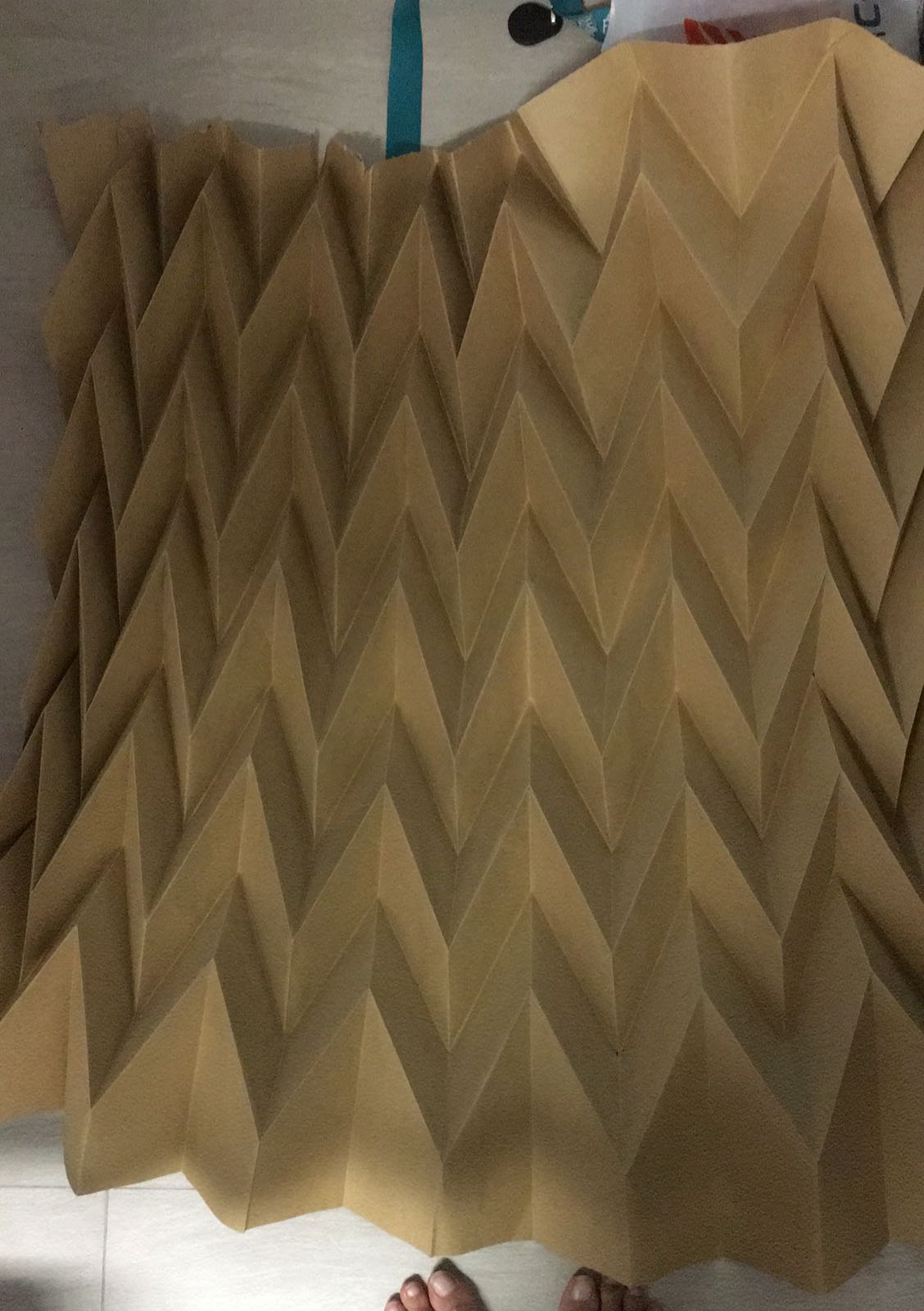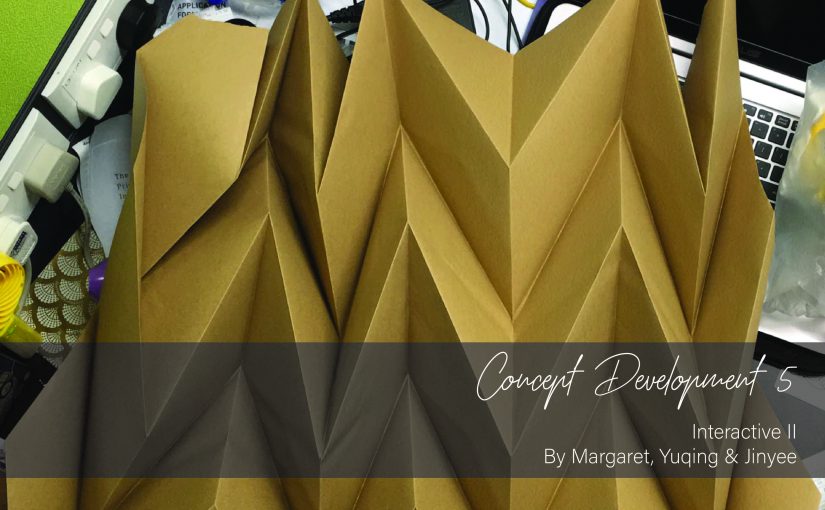27 March ( consultation )
We showed LPD our videos of our progress so far. The following are the comments:
- When down up to a larger scale, it may not work due to the elasticity of the paper and weight.
- It will probably need around 20 motors for it tow work… Unless you scale it down a lot.
- Maybe it can be a projection of their face or a distorted face
- Can even be done in a game that follows the mapping of the paper tessellation, like snakes sliding down the triangle vertices and line.
- Or instead of presenting the paper vertically above the people’s heads, the paper can be holstered upright vertically, with a camera reading the movement of the paper after which it gets transferred to a top down projection.
- Go another level higher if the whole tessellation can be mapped with the projection visuals accordingly when at rest, when the paper moves, the projection mapping follows along mapping the new changes in real time. LPD tested with his cam and codes by changing the threshold, the computer could easily detect the rifts of the tessellation via light and shadow area, however, MAX could barely detect the folds. We felt that it was quite overly ambitious.
- It was also suggested that we may want to think of having the paper tessellation placed horizontally on a table, the audience can interact with it by tugging at the strings.
We mentioned another idea of weaving, since interconnectedness can be represented by the idea of weaving. After explaining the idea and how the work would look, LPD felt that there was barely any interaction between the audience and the work, and that to make the motorised weaving machine from scratch was too difficult.
Things we did for the rest of the class time
We decide that it was paramount to try it on a larger sized paper, as what LPD said in point 1 made sense. We went to get brown paper (it was thicker due to the larger GSM weight than the A4 paper we’ve tried) to test. As of now, the colour and opacity is not of importance as our biggest problem might just be the weight and how it affects the way the paper tessellation moves.
Before folding, we decided to go for the flatter tessellation instead of the ones we tried that had more 3D form as we felt that it would draw away from our main concept of the ripple.
The following are the two larger tessellations folded. They are of the same pattern, however the difference is the size of the triangle foldings. We prefer the smaller foldings, as it looks more interesting as well as having greater structural integrity.



